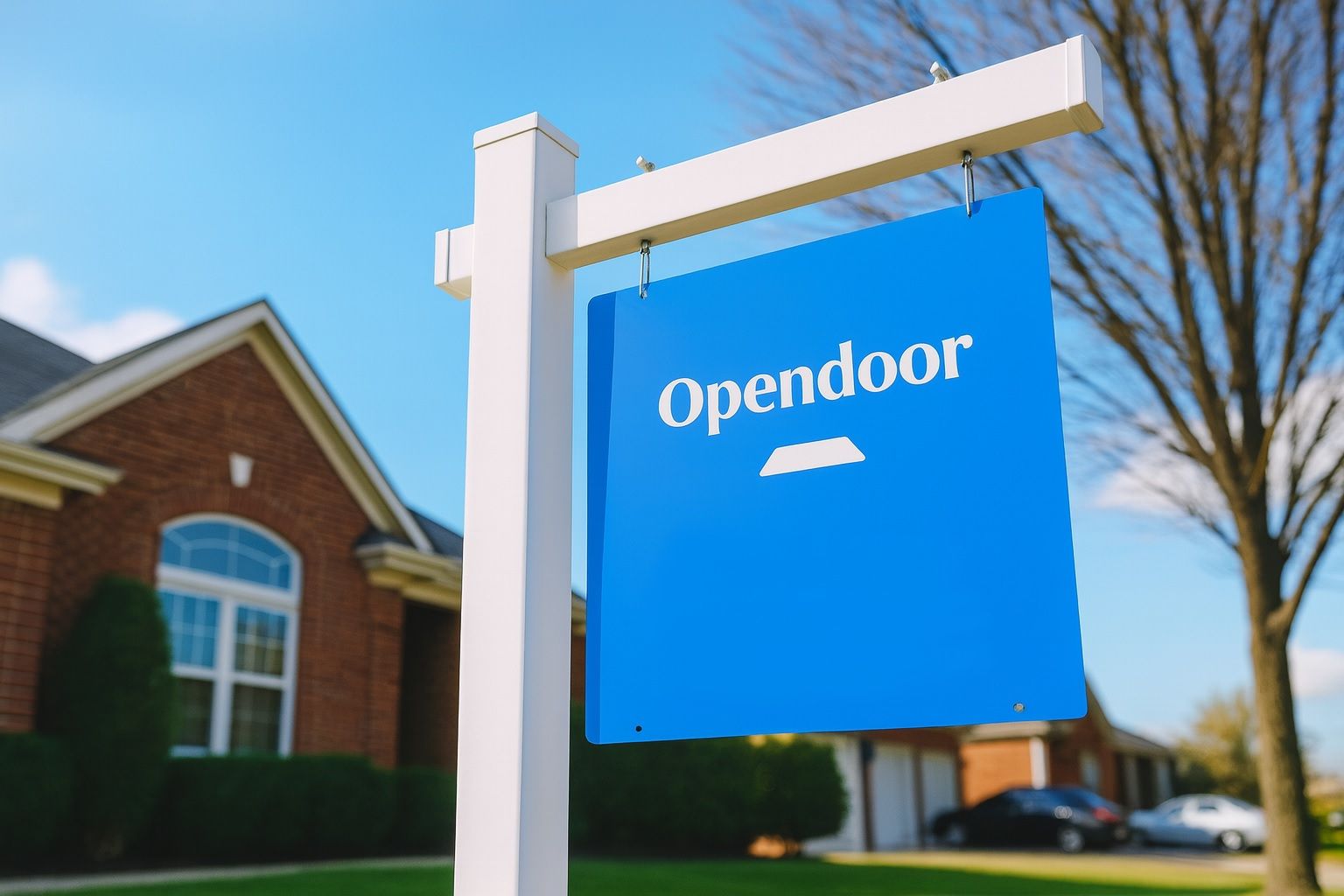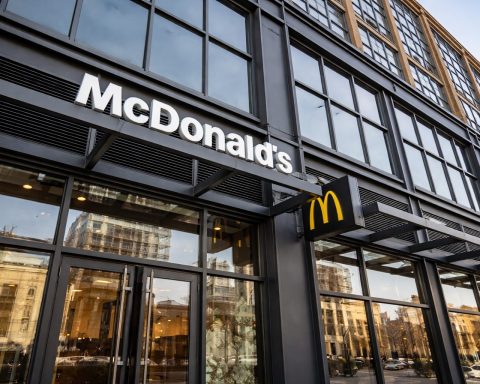- Stock Price (Oct 26, 2025): ~$7.97 per share (last close on Oct. 24), after jumping +13% on Friday amid hopes of Federal Reserve rate cuts [1].
- Market Capitalization: Approximately $5.9 billion at the current share price [2].
- Recent Performance:Up ~400% year-to-date 2025 after a speculative frenzy drove a +1,600% surge from ~$0.50 in June to a peak of $10.87 in mid-September [3]. Shares have since cooled ~30% from that high [4], though they remain dramatically above early-2025 levels.
- Major Developments: A major leadership shake-up saw ex-Shopify COO Kaz Nejatian become CEO in September (with co-founder Keith Rabois returning as Board Chair), sparking enthusiasm for an AI-driven turnaround [5]. The company also confirmed plans to accept cryptocurrency (e.g. Bitcoin) for home purchases, which ignited a one-day 14% stock pop [6]. Meanwhile, cooling inflation and the Fed’s first rate cut of 2025 have lifted real estate stocks broadly in recent days [7].
- Analyst Sentiment:Wall Street is skeptical. The average 12-month price target is only ~$1–2 (range ~$0.70 to $6), far below the current price [8]. One hedge fund manager even labeled OPEN “total garbage” with a broken model [9]. Bulls, however, argue Opendoor’s ~1× sales valuation and tech advantage as the last big iBuyer could yield upside if the housing market rebounds [10]. Overall, most analysts rate the stock a Hold/Sell, citing thin margins and uncertain profitability.
Latest News & Recent Developments (Late October 2025)
In the past few days, Opendoor’s stock has whipsawed on macro news. On Friday, Oct. 24, OPEN soared over 13% to $7.97 after a cooler-than-expected inflation report fueled optimism that the Fed will cut interest rates soon [11] [12]. Real estate-related stocks rallied broadly on the prospect of lower borrowing costs, and Opendoor – highly sensitive to interest rates – was a big beneficiary, jumping to its highest levels in a week [13].
This rebound followed a mid-month pullback. As recently as October 22, Opendoor had dipped to around $6.82 per share [14], down roughly 20–30% from its September highs. Trading momentum had cooled – the stock spent five consecutive days in the red by mid-October amid fading meme-stock enthusiasm and declining trading volume [15]. The ebb in retail trader frenzy (the so-called “$OPEN Army”) led to a healthy technical correction [16]. However, improving macro sentiment late in the week helped reverse some of those losses, underscoring how reactive OPEN remains to news flow.
There have also been company-specific developments. Earlier this week, Morgan Stanley reportedly raised its price target on Opendoor from $2 to $6 (while maintaining an Equal-Weight rating), a move that signaled slightly increased confidence ahead of earnings [17]. Around the same time, Opendoor announced a key hire: Giang LeGrice, a former VP of Operations at Shopify, joined as Opendoor’s new Head of Operations to support the turnaround [18]. CEO Kaz Nejatian – himself a former Shopify exec – praised her as a “world-class leader,” and the news added to positive sentiment. These leadership additions align with Opendoor’s push to infuse tech industry expertise into its real estate operations.
Looking ahead, a major near-term catalyst is the Q3 2025 earnings report slated for November 6, 2025 [19]. Opendoor has already guided that Q3 revenue will plunge about 50% year-over-year to ~$0.8–0.87 billion, sliding back into a loss after eking out a profit in Q2 [20]. Wall Street expects a ~36% YoY revenue drop for the quarter [21]. In fact, back in August the company’s weak Q3 outlook overshadowed its positive Q2 results, sending the stock down ~11% after that guidance miss [22]. Investors will be keen to see if actual results on Nov. 6 beat these low expectations or if management updates its strategy outlook (Nejatian has hinted at a “big” product update coming, possibly leveraging AI [23]). Given the stock’s recent volatility, earnings could be a crucible moment, setting the tone for OPEN into year-end.
Financials, Stock Performance & Valuation
Opendoor’s business model is iBuying – algorithmically buying homes and reselling them – which means thin margins and high revenue churn. The company struggled through 2022–23 as housing markets turned down, posting significant losses. Notably, Q2 2025 provided a glimmer of financial improvement: Opendoor delivered $1.6 billion in revenue and achieved a $23 million adjusted EBITDA profit (its first quarter in the black on an operating basis since 2022) [24]. It sold 4,299 homes in Q2 with a gross profit of ~$128M (8.2% gross margin) and even authorized a $200M stock buyback for Q3 – a vote of confidence by management [25]. Net income was still negative (around -$29M in Q2), but losses had narrowed considerably.
However, the Q3 outlook shows the other side of that coin: with mortgage rates climbing, Opendoor warned that sales would drop by half sequentially in Q3, to ~$800M, putting it back into the red [26]. In short, Opendoor’s financials remain highly volatile and sensitive to housing cycles. For the full year, revenue will be down sharply from 2022 levels due to the company drastically scaling back home purchases last year amid rising interest rates. Investors are essentially betting that 2025 marked a bottom and that growth will resume as the housing market stabilizes.
Valuation-wise, after its huge rally, Opendoor now sports metrics more akin to a tech growth stock than a distressed asset. At ~$7.97/share, the company’s market cap is about $5.9B [27]. This equates to roughly 1.1× trailing annual revenue (TTM sales of ~$5.2B) [28] – a seemingly modest price-to-sales ratio around 1.1, especially given Opendoor’s historical ~40%+ annual growth rate [29]. Bulls argue this is cheap for a market leader in an industry ripe for disruption [30]. However, profitability is the sticking point. Opendoor’s P/E is negative (no earnings) [31], and even on a book value basis the stock looks pricey (P/B ~9) [32]. In other words, the market is valuing Opendoor not on current earnings but on future potential – the expectation that it can eventually generate consistent profits from its home-flipping platform. Skeptics note that the company has lost money in each of the past four quarters and that its single-digit gross margins leave little room for error [33]. The $5–6B valuation is a hefty premium if those profitability issues aren’t resolved [34].
It’s also worth noting Opendoor’s stock performance trajectory to appreciate how much sentiment has swung. At the start of 2025, OPEN was a penny stock (trading well under $1). The combination of improving housing data and a resurgence of retail trading enthusiasm sent the stock on a meteoric rise: from about $0.50 in June to over $10 by mid-September (+1,600% in just a few months) [35]. This astonishing rally briefly gave Opendoor a mid-cap valuation and made it one of 2025’s top-performing stocks. By early autumn, Yahoo Finance noted OPEN was up +369% year-to-date (dwarfing the S&P 500’s ~14% YTD gain) [36]. However, the ride has been extremely volatile. After peaking above $10, the stock pulled back ~25% into October [37]. In fact, dizzying swings have become normal: Opendoor rocketed +79% in a single day on Sept. 11 (when the new CEO was announced), then plunged ~20% over the next two sessions when traders rotated to the next hot ticker [38]. Such swings reflect the heavy retail speculation and high short interest behind OPEN’s rally [39]. Approximately 20–25% of Opendoor’s float is sold short [40], which has at times fueled massive short squeezes and reversals. In summary, Opendoor’s 2025 performance has been a double-edged sword – delivering eye-popping gains for daring investors, but with stomach-churning volatility and significant fundamental risk underlying the hype.
Technical Analysis – Support, Resistance and Indicators
From a technical perspective, Opendoor’s chart has been a roller coaster. The stock’s 52-week trading range spans from $0.51 (all-time low) to $10.87 (recent high) [41], highlighting the extraordinary volatility. After the pullback from September’s peak, OPEN has been trying to establish support in the mid-$6 to low-$7 area. Indeed, shares found footing around $6.80 on Oct. 22 before rebounding [42], suggesting the upper-$6s may serve as a near-term support level. This roughly corresponds to the price range where the stock consolidated right after the September spike, so traders are watching to see if it can hold above those levels. On the upside, the $10 mark (the September high) now represents a major resistance level – any future rallies would likely face profit-taking and technical selling as OPEN approaches the double-digit zone again.
Key technical indicators are mixed in the middle, reflecting the recent consolidation. Opendoor’s 14-day Relative Strength Index (RSI) is about 54 (neutral) [43], indicating the stock is neither overbought nor oversold after its pullback. The moving averages show a short-term downtrend had been in place but may be stabilizing: OPEN is currently trading ~2% above its 20-day SMA and ~14% above the 50-day SMA thanks to the latest bounce [44]. However, the stock remains over 200% above its 200-day average [45] – a legacy of the summer’s parabolic run-up. This gap suggests the long-term trend is still stretched (the 200-day SMA down in the low-$3 range reflects how low the stock was earlier this year), and some technicians might expect mean reversion unless Opendoor’s fundamentals markedly improve.
Another notable factor is volatility: Opendoor’s average daily trading range is extremely wide. The stock has been posting daily moves near 10% on average [46], far higher than a typical mid-cap stock. Such high volatility means that traditional support/resistance levels can be overshot quickly – cautioning traders that stop-loss levels need to be wider and position sizes smaller than normal. The declining trading volumes in recent weeks (as noted in mid-October) [47] had indicated weakening momentum, but volume spiked again during the late-October rebound. All in all, the technical picture shows cautious stabilization: if $6–$7 support holds, bulls may attempt to build a base here, but any break below the mid-$6 zone could signal a deeper retracement. Conversely, a push back above $8.50-$9 might gather steam, though the $10-$11 area will be a tough ceiling without fundamentally new positive news.
Analyst & Expert Outlook
Market sentiment around OPEN is sharply divided between exuberant retail traders and skeptical Wall Street analysts. On the retail side, Opendoor has a passionate following on forums like Reddit – the so-called “$OPEN Army” – that helped propel the stock’s meme-like rally [48]. Many of these investors are betting on a long-term disruptive vision for the company (or simply momentum), and their enthusiasm has, at times, defied traditional valuation logic.
By contrast, Wall Street’s consensus is largely bearish or cautious. The average analyst 12-month price target is only around $1.5 (in the $1–2 range) [49], implying expectation of a drastic drop from current prices. Even the highest bullish analyst target is about $6 – still below where OPEN trades now [50]. In recent months, several analysts have actually downgraded the stock as it surged. For example, Keefe Bruyette downgraded OPEN to Underperform with a $1 target in August, and Citigroup cut it to Sell [51]. Such moves reflect a view that the stock’s valuation got far ahead of fundamentals. One hedge fund manager bluntly slammed Opendoor as “total garbage,” arguing its business model is broken at a fundamental level [52]. The core of the bear case is that flipping homes at scale, with razor-thin margins, in a volatile housing market is an extremely tough way to consistently make money – and Opendoor has yet to prove it can do so.
That said, there are some bulls and opportunistic voices among experts. Notably, JPMorgan reportedly reiterated an Overweight (Buy) rating on OPEN in September when the new CEO was announced, viewing the leadership change and tech focus positively [53]. Just this week, as mentioned, Morgan Stanley raised its price target to $6 from $2 (though keeping a neutral stance) [54] – a nod to the stock’s upside momentum, if not a full endorsement. Growth-oriented analysts point out that Opendoor has achieved a ~43% revenue CAGR and now trades around ~1× sales, which could be attractive if the company returns to growth [55]. They also note that Opendoor dominates the iBuyer niche now that competitors have bowed out, potentially giving it a chance to capture outsized market share when conditions improve [56]. As one optimistic take put it, Opendoor’s technology and scale as the last major iBuyer “give it a second chance to thrive” in a housing recovery [57].
Industry observers are likewise split. Some real estate tech proponents believe Opendoor’s data-driven pricing and consumer-friendly platform could “disrupt real estate at scale” if it survives this transition period [58]. They argue that traditional home sales are ripe for modernization and that Opendoor, having weathered the worst of the storm, could emerge as a profitable category leader when the market rebounds. On the other hand, many seasoned housing experts point to the cautionary tales of Zillow and Redfin (who couldn’t make iBuying profitable) as evidence that the model may simply be fundamentally flawed. Opendoor’s own management has set a goal to reach profitability by 2026, but even the new CEO acknowledges they need to “do more with less” and radically improve efficiency to get there [59]. Until the company can string together a few quarters of consistent profits (or at least break-even cash flow), expect Wall Street to remain unconvinced.
Competition and Industry Landscape
Opendoor operates in a unique corner of the real estate industry – and right now it has surprisingly few direct competitors. Both Zillow (NASDAQ: Z) and Redfin (NASDAQ: RDFN), which launched their own iBuyer programs in the late 2010s, shut down those operations (Zillow in 2021, Redfin in 2022) after sustaining heavy losses [60]. Those high-profile failures underscore how challenging the iBuying model can be. Zillow famously took a ~$500 million write-down when it exited home-flipping, and Redfin’s venture was also unprofitable – they decided their capital was better spent on their core businesses (online listings and brokerage).
Today, Opendoor and Offerpad are the last major iBuyers standing in the U.S. Offerpad (NYSE: OPAD), founded in 2015, remains a much smaller player – operating in only ~9 states with a more limited inventory [61]. Opendoor, by contrast, has expanded to 50+ markets nationwide and carries a far larger housing inventory on its books. This near-monopoly in iBuying gives Opendoor a chance to set the standard in the space without direct price competition from similar scale rivals. In theory, that could allow for better margins (e.g. less need to overpay for homes to beat a competitor’s bid). However, the lack of competitors is also a sign of the model’s difficulty. Even real estate giants with deep pockets pulled back, suggesting iBuying may be an inherently low-margin, high-risk business. Opendoor must convince investors that it can succeed where others failed – perhaps through superior technology, AI-driven efficiency, and more disciplined pricing.
Opendoor also faces indirect competition from traditional real estate channels and emerging tech models. Many homeowners still opt to sell through traditional agents or newer “power buyer” services that offer bridge loans or buy-before-you-sell programs. Additionally, rising startups are tackling pieces of the real estate transaction (for example, marketplaces for cash offers, fractional homeownership, etc.), though none offer the soup-to-nuts convenience of Opendoor’s instant offers. One strategic shift for Opendoor is that it’s no longer trying to disintermediate agents entirely – under CEO Nejatian, Opendoor is partnering with local real estate agents to help sell its homes, paying them commissions (something it didn’t do initially) [62]. This partnership model blurs the line between Opendoor and traditional brokerages, effectively enlisting agents to broaden Opendoor’s reach. It’s a recognition that the company may need the existing industry’s help (and local expertise) to move homes more efficiently. How well Opendoor can collaborate with the broader real estate ecosystem, while still maintaining its tech-enabled edge, will be an interesting dynamic to watch.
Macroeconomic Factors and Real Estate Market Impact
The broader housing market and macroeconomic climate are critical to understanding Opendoor’s prospects. The company’s fortunes rise and fall with real estate demand and home price trends. In 2022-2023, the environment turned hostile: the Federal Reserve’s rapid rate hikes pushed 30-year mortgage rates from the ~3% range to 7%+, a level not seen in two decades. This caused housing affordability to plummet and sales volumes to hit multi-decade lows. Almost overnight, the U.S. market shifted from a red-hot seller’s market (in 2021) to a chilled buyer’s market by 2023. According to Redfin data, by late 2023 there was a record surplus of sellers over buyers – about 500,000 more homes on the market than interested buyers [63]. This kind of imbalance is brutal for an iBuyer: Opendoor was stuck holding housing inventory in a falling market, forcing it to sell many homes for less than purchase price. Indeed, Opendoor’s losses in 2022 stemmed largely from having to write down home values when the market turned.
As we enter late 2025, there are some glimmers of hope on the macro front. Inflation has been gradually cooling, and the Fed has finally pivoted to easing mode. In September 2025, the Fed cut interest rates for the first time in this cycle, a milestone indicating that the era of monetary tightening is ending [64]. Another rate cut is anticipated by the end of October [65]. While mortgage rates are still high (mid-6% range), they’ve ticked down slightly from their peaks [66]. Importantly, new home sales spiked +20% in August 2025 – a sign that buyers are creeping back as builders offer incentives and rates stabilize [67]. If this trend continues, 2025 could mark the bottom for housing activity, with a modest recovery in 2026. Lower interest rates typically filter through to cheaper mortgages in the ensuing months, which would improve home affordability and buyer demand [68].
For Opendoor, a housing market rebound is absolutely crucial. The company’s margins are razor-thin, so it really needs home prices to at least hold steady (if not rise) during the short period it holds inventory. It also needs transaction volumes to pick up – more buyers and sellers actively trading homes – to drive its growth. Management has indicated that a sustained housing uptick will be key to improving profitability [69]. Conversely, if the economy were to slip into recession or if mortgage rates unexpectedly spike again, it could renew severe pressure on Opendoor’s business. The specter of 2022’s housing cooldown still looms: it showed how quickly an iBuyer can hit the brakes on acquisitions to limit risk, but also how that kills revenue growth. Thus, Opendoor is highly leveraged to macro trends it cannot control. The optimistic view is that the worst is over – with inventory now leaner, any improvement in demand could flip the script and allow Opendoor to sell homes at appreciating prices. The pessimistic view is that the housing market might stay sluggish for years (or that another macro shock could occur), preventing Opendoor from regaining its high growth trajectory. As of now, the company and many investors are banking on the former, pointing to early signs of stabilization and the Fed’s friendlier stance as reasons to believe the real estate cycle will turn in Opendoor’s favor [70].
Outlook – Short-Term and Long-Term Forecast
Short-Term (Next 1–3 months): Expect the volatility to continue. In the immediate term, all eyes are on the Q3 earnings release (Nov 6, 2025) and the guidance or commentary management provides for Q4 and 2026. Opendoor’s stock could swing sharply on earnings – positive surprises (like smaller-than-feared losses, or a confident outlook from the new CEO) might spark another rally, whereas any disappointment (e.g. worse margins or weak Q4 guidance) could trigger a sell-off. Given the stock’s huge run-up this year, some traders may use strength to take profits, so upside could be self-capped unless there’s significantly good news. Macroeconomic news will also drive short-term moves. If late October brings another Fed rate cut or continued cooling in inflation, real estate stocks including OPEN may get a further sentiment boost. Conversely, any indication that inflation isn’t slowing or that the Fed might hold rates higher for longer would likely weigh on housing-sensitive names. In the near term, Opendoor will also be digesting its recent gains – it would not be surprising to see the stock range-bound between, say, ~$6 and $9 as bulls and bears wrestle for control. The retail trader influence adds an unpredictable element: sudden bursts of social-media hype or chatter on Reddit/Stocktwits could catalyze outsized moves on little news (as we saw with the September meme surge). Short-term traders should be prepared for rapid swings and news-driven spikes/dips, and monitor technical levels (support ~$6–7, resistance ~$10) for breakout or breakdown signals.
Long-Term (1–2 years+): The big question is whether Opendoor can successfully execute its turnaround and prove the iBuying model can be profitable at scale. By 2026, management aims to reach breakeven or better [71]; achieving that would likely require a combination of factors: improved housing market conditions, much higher operational efficiency (possibly via the AI and automation initiatives), and disciplined growth. On the bullish side, Opendoor’s new leadership appears to be taking aggressive steps to right-size the business – cutting costs, reducing workforce, and focusing on more efficient, tech-driven processes [72]. The pivot to an “AI-first, agent-led” platform could gradually lower expenses (through better pricing algorithms, automation of tasks, etc.) and increase sell-through rates (by enlisting agents and offering novel services like the 7-day “home test drive”) [73] [74]. If Opendoor can survive the current period and even eke out small profits during a housing recovery, the upside could be significant. The addressable market (existing home sales) is enormous – millions of homes worth trillions of dollars transact annually – so even a few percent market share for Opendoor would translate to tens of billions in sales. In a bullish scenario where Opendoor becomes a dominant, profitable digital real estate platform, one could argue the stock has long-term multibagger potential from today’s ~$8 level.
That said, the bearish longer-term scenario cannot be ignored. The core concerns are: Can Opendoor ever sustainably make money on home flips, given the inherent market risks and thin margins? Bears point out that even at lower prices, the stock isn’t “cheap” if the company keeps diluting shareholders or burning cash. Fundamentals currently do not support the valuation – Opendoor is still valued in the billions despite cumulative losses and an uncertain path to profitability [75] [76]. If the housing market recovery falters or if Opendoor’s AI-powered efficiency push doesn’t materialize in better margins, the company could continue to struggle. In that case, today’s stock price might look like an artifact of meme-stock speculation, prone to “re-rating” downward over time. Some investment analysts have warned against the “cheap illusion” – just because OPEN traded under $1 before doesn’t guarantee its new higher price will hold, especially if fundamentals lag. The fading of trading volume in October was a warning sign that the hype can and will cool off [77] [78]. If retail interest wanes and no tangible profits emerge, OPEN could retrace a large portion of its 2025 gains.
Bottom line: Opendoor remains a high-risk, high-reward story. In the short term, volatility and speculation rule the day – expect rapid moves around news on interest rates, earnings, or any major company announcements. In the long term, Opendoor’s share price will hinge on execution and housing trends. Optimists see a reinvented Opendoor that, with the help of AI and a leaner operation, could finally crack the code of online homebuying and justify a far higher valuation. Pessimists see a company on borrowed time, propped up by meme-stock fervor and a housing blip, destined to revert to penny-stock status. As of late 2025, the Opendoor saga is at a crossroads: the next few quarters – and the direction of the U.S. real estate market – will likely determine which narrative comes to pass. Investors should tread carefully and watch those key indicators (housing data, cash burn, and progress on the turnaround) as OPEN navigates this pivotal chapter [79] [80].
Sources: Key information and quotes in this article are sourced from TechStock²/ts2.tech analysis of Opendoor [81] [82] [83], Opendoor’s financial filings and press releases, Yahoo Finance/InsiderMonkey updates [84] [85], MarketBeat/FinViz market data [86] [87], the Motley Fool and StockStory news reports [88] [89], and NAI Financial’s commentary on Opendoor’s valuation and risks [90] [91]. All data is as of October 26, 2025.
References
1. markets.financialcontent.com, 2. finviz.com, 3. ts2.tech, 4. nai500.com, 5. ts2.tech, 6. ts2.tech, 7. ts2.tech, 8. ts2.tech, 9. ts2.tech, 10. ts2.tech, 11. markets.financialcontent.com, 12. markets.financialcontent.com, 13. markets.financialcontent.com, 14. ts2.tech, 15. nai500.com, 16. nai500.com, 17. markets.financialcontent.com, 18. markets.financialcontent.com, 19. ts2.tech, 20. ts2.tech, 21. ts2.tech, 22. ts2.tech, 23. ts2.tech, 24. ts2.tech, 25. ts2.tech, 26. ts2.tech, 27. finviz.com, 28. finviz.com, 29. ts2.tech, 30. ts2.tech, 31. www.marketbeat.com, 32. finviz.com, 33. nai500.com, 34. nai500.com, 35. ts2.tech, 36. ts2.tech, 37. ts2.tech, 38. ts2.tech, 39. ts2.tech, 40. ts2.tech, 41. ts2.tech, 42. ts2.tech, 43. finviz.com, 44. finviz.com, 45. finviz.com, 46. finviz.com, 47. nai500.com, 48. ts2.tech, 49. ts2.tech, 50. ts2.tech, 51. finviz.com, 52. ts2.tech, 53. ts2.tech, 54. markets.financialcontent.com, 55. ts2.tech, 56. ts2.tech, 57. ts2.tech, 58. ts2.tech, 59. ts2.tech, 60. ts2.tech, 61. ts2.tech, 62. ts2.tech, 63. ts2.tech, 64. ts2.tech, 65. ts2.tech, 66. ts2.tech, 67. ts2.tech, 68. ts2.tech, 69. ts2.tech, 70. ts2.tech, 71. ts2.tech, 72. ts2.tech, 73. ts2.tech, 74. ts2.tech, 75. nai500.com, 76. nai500.com, 77. nai500.com, 78. nai500.com, 79. nai500.com, 80. nai500.com, 81. ts2.tech, 82. ts2.tech, 83. ts2.tech, 84. markets.financialcontent.com, 85. markets.financialcontent.com, 86. finviz.com, 87. finviz.com, 88. nai500.com, 89. markets.financialcontent.com, 90. nai500.com, 91. nai500.com







